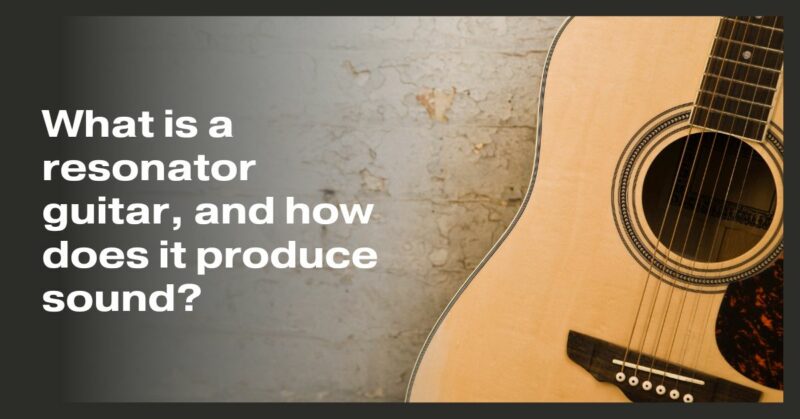The world of guitars is as diverse as the music it creates, with instruments ranging from the classic acoustic to the electric. Among this rich tapestry of sounds, resonator guitars stand out as a unique and fascinating category. Their distinctive appearance and captivating tones have earned them a special place in various musical genres. In this article, we’ll explore what a resonator guitar is and delve into the mechanics that make it produce its signature sound.
What is a Resonator Guitar?
A resonator guitar is a type of acoustic guitar that uses one or more metal cones or resonators instead of a traditional soundhole and soundboard to produce sound. Resonator guitars were initially designed in the early 20th century to address the need for increased volume in acoustic instruments before the advent of amplification. These instruments became especially popular in blues, bluegrass, and slide guitar playing.
Components of a Resonator Guitar:
- Resonator Cones: The most defining feature of a resonator guitar is its metal resonator cone(s). These are typically made of spun aluminum or brass and are located inside the guitar’s body, directly beneath the cover plate. The resonator cone(s) serve as a resonating chamber, amplifying the guitar’s sound.
- Cover Plate: The cover plate is a metal plate that sits on top of the resonator cone(s). It has one or more openings (usually F-shaped) that allow sound to escape. The vibrations of the strings are transferred to the resonator cone(s) through a bridge, causing them to resonate and amplify the sound.
- Neck and Body: The neck and body of a resonator guitar are similar in construction to a traditional acoustic guitar. The neck typically features a fretboard and frets, while the body can have various shapes, such as single-cone, biscuit-bridge, or tri-cone designs.
How Does a Resonator Guitar Produce Sound?
The unique sound of a resonator guitar is a result of its unconventional sound-producing mechanism:
- String Vibration: When you pluck a string on a resonator guitar, the vibrations travel down the string to the bridge.
- Bridge: The bridge on a resonator guitar is similar to that of a traditional guitar, but it has a slightly different function. Instead of transferring vibrations directly to a soundboard, it transmits them to the resonator cone(s).
- Resonator Cones: The resonator cone(s) act as the primary sound-producing element. When the bridge transfers the string vibrations to the cone(s), they begin to resonate and amplify the sound. This amplification is what gives the resonator guitar its distinct volume and bright, metallic tone.
- Cover Plate: The cover plate, with its openings, allows the amplified sound to escape. The shape and design of the cover plate can influence the guitar’s tonal characteristics.
Types of Resonator Guitars:
There are several types of resonator guitars, each with its unique design and sound:
- Single Cone: This type has a single resonator cone and is known for its bright, metallic tone. It’s commonly used in blues and bluegrass music.
- Biscuit-Bridge: The biscuit-bridge design features a single resonator cone that sits on a wooden biscuit. It’s known for its warm and mellow tone.
- Tri-Cone: Tri-cone resonator guitars have three smaller cones arranged in a triangular pattern. They offer a complex and rich tonal palette.
Conclusion: A Sonic Adventure Awaits
Resonator guitars are captivating instruments that stand at the intersection of artistry and engineering. Their unique design and mechanics allow them to produce tones that are distinct from traditional acoustic guitars, making them a favorite among musicians in various genres. Whether you’re drawn to the soulful bluesy sounds or the bright, ringing tones of bluegrass, a resonator guitar offers a captivating sonic adventure that’s waiting to be explored.

